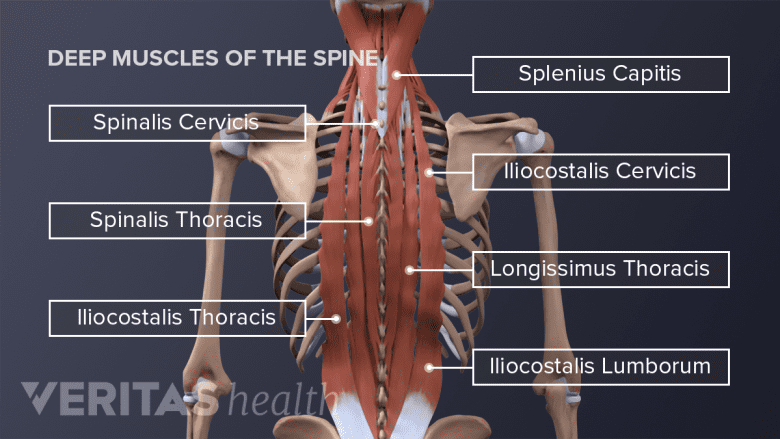Soft tissues around the spine play a key role in lower back pain.
There is a large and complex group of muscles that work together to support the spine, help hold the body upright and allow the trunk of the body to move, twist and bend in many directions.
Extensor, Flexor, and Oblique Muscles of the Back
Three main types of back muscles that help the spine function are extensors, flexors, and obliques.
- The extensor muscles are attached to back of the spine and enable actions like standing and lifting objects. These muscles include the large paired muscles in the lower back, called erector spinae, which help hold up the spine and the gluteal muscles.
- The flexor muscles are attached to the front of the spine and enable bending forward, lifting, and arching the lower back.
- The oblique muscles are attached to the sides of the spine and help rotate the spine and maintain proper posture.
The Role of Physical Activity and Exercise in Maintaining Muscle Health

Strengthening the back muscles helps reinforce support of the spine.
Back muscles, like any other muscle in the body, require adequate exercise to maintain strength and tone.
While the leg and thigh are used everytime we walk or climb a step, the deep back muscles and abdominal muscles are usually not actively engaged during everyday activity. Unless muscles are specifically exercised, back muscles and abdominal muscles tend to weaken with age.
Physical therapy and exercise for lower back pain usually focus on strengthening the flexor, extensor, and oblique muscles. This in turn helps reinforce support of the spine, thereby reducing low back pain.
In This Article:
The Role of Back Muscles In Causing Back Pain

Stress can cause the back muscles to tighten, causing spasm and pain.
When the facet joints or certain other structures in the spine become injured or inflamed, the large back muscles can spasm and cause low back pain and marked limitation in motion.
Watch Video: What Is Your Back Muscle Spasm Telling You?
An episode of lower back pain that lasts for more than two weeks can lead to muscle weakness (since using the muscles hurts, the tendency is to avoid using them). This process leads to muscle wasting and subsequent weakening, which in turn causes more back pain because the muscles of the back are less able to help hold up the spine.
Chronic stress can also lead to muscle weakness and back pain. Stress causes back muscles to tighten in a fight or flight response, depriving muscles of energy needed to support the spine.
Another key structure in low back pain is the hamstring muscles, the large muscles in the back of the thighs. Patients with tight hamstrings tend to develop low back pain, and those with lower back pain tend to develop tight hamstrings.
Muscle strength and flexibility are essential to maintaining the neutral spine position. Weak abdominal muscles cause hip flexor muscles to tighten causing an increase in the curve of the low back.
An unhealthy posture results when the curve is overextended called lordosis or swayback. Proper posture corrects muscle imbalances that can lead to low back pain by evenly distributing weight throughout the spine.

